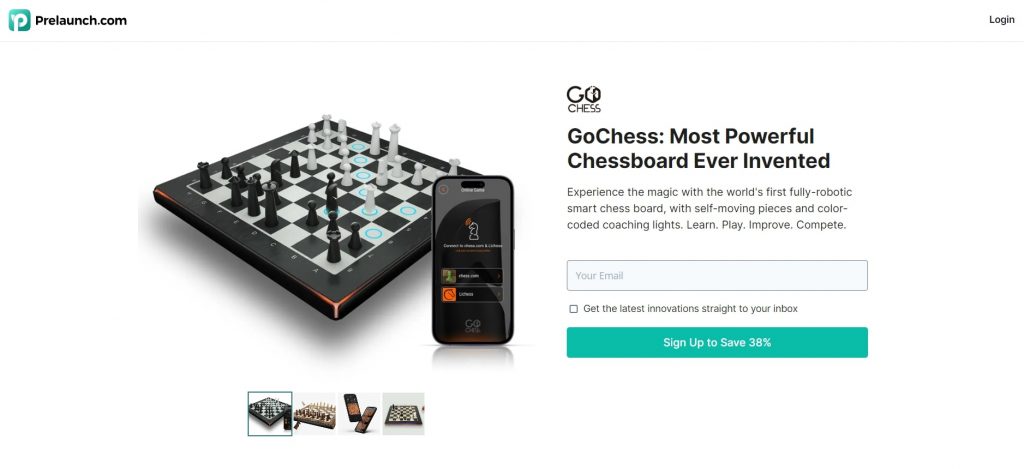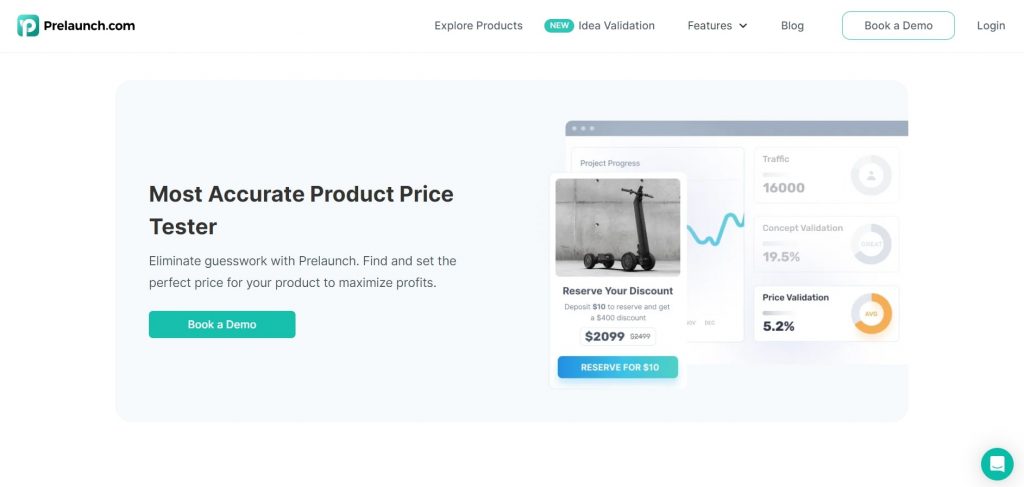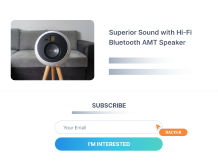It comes as no surprise that marketing isn’t exactly a walk in the park. You’ll need to find, attract, and keep the right audience. Of course, this is easier said than done, especially when it comes to board game marketing. It’s something you’ll be putting a great deal of time and thought into. If you have a concept and want to get it off the ground and onto your customers’ tables, knowing how to market a board game is the way forward.
This article covers the A to Z of marketing a board game, from finding the right audience to launching a crowdfunding campaign and beyond. Before you know it, your game will be the reason for countless gatherings – and a source of fun for many.
Board Game Marketing and Advertising
Identifying Target Audiences and Refining Game Concepts
Before you launch your board game concept, you’ll want to figure out who your audience is. Board games typically have very niche audiences. Take Monopoly, for example. It’s no doubt an iconic game. But those who play it might not enjoy, let’s say, Dungeons and Dragons.
Considering how specific the board game market can be, you’ll want to spend extra time understanding your target audience. It can help to create a buyer persona in this case. To do so, ask yourself questions like who will want to play the game, how old are they, and what other games they might be interested in. You can then use the unique traits of your audience to come up with campaign ideas and polish your game concept.
Board Game Marketing Process: The AIDA Model
Once you’ve identified your target audience, you’ll want to know how to sell a board game. The foolproof AIDA model comes to mind here – attention, interest, desire, action. You grab the audience’s attention, get them interested in your product, make them desire it, and encourage them to take action.
Attention: Make Your Audience Aware of Your Game
To market your board game, the first thing you’ll need to do is get people to know that it actually exists. This is where you generate leads. Go to digital spaces where people are most likely to show interest in your game and grab their attention. The point is to get the word out in all the right places – be it Discord, Reddit, or even Twitter (now X). You can also playtest your board game at local events or do a podcast about it online.
Interest: Explain Your Game to Your Audience
Now that your target audience knows that your board game is out there, it’s time to make them curious about it. They will want to know more about your game before they think about buying it. What’s the theme of the game? How many players can play it at the same time? But keep in mind that not everybody will be interested. Instead of forcing people to care about your game, focus on talking about it to those who actually want to know more. Instagram, YouTube videos, and blog posts can all come in handy here. Word of mouth will do the rest.
Desire: Make Your Audience Want Your Game
Once people are aware of your product and are interested in learning more, it’s game on. This is where you’ll want to convert them from being curious to actually wanting it – and one way to do that is through exposure and proof. When it comes to exposure, the trick is to do it over and over again until your audience’s minds associate it with desire. You see – much of what humans like is because of systematic hype. As for proof, people often tend to go with the flow. When they notice that others want a certain board game, they’ll start wanting it too.
The best way to create both exposure and proof is by creating online communities on social platforms like Facebook and Discord. Consistency is key here. Make sure to keep talking about your board game so that it’s always on people’s minds.
Action: Drive Your Audience to Take Action
At this point, you’ll have people wanting to buy your game. This is where you’ll want to drive them to take action. A call to action (CTA) is your friend here. For example, you can tell your prospects a week in advance that your board game will be available for pre-order, and encourage them to sign up for more updates. You can then let your subscribers know that the game is up for grabs. How you do this depends on where your potential customers are most likely to be and how they would prefer to receive the update. It can be a direct message on Instagram or maybe even an SMS text.
Online Presence and Social Media Strategies
Establishing an Online Presence
Having an online presence is an absolute necessity for board game marketing. First things first, you’ll want to create a dedicated website where your visitors can learn about your board game, its features, and how it’s coming along. Consider a search engine optimization (SEO) strategy to boost visibility in Google and other search engines. This means using high-volume keywords in all your blog posts and landing pages.
Make sure to keep your website up-to-date with new content on a regular basis. People may want to see things like gameplay reviews, behind-the-scenes insights, and announcements about upcoming events or releases. By maintaining an active online presence, you can keep your audience on its toes and drive traffic to your campaign.
Leveraging Social Media for Awareness
As part of your online presence, you’ll want to leverage social media as well. Social media platforms can be valuable for generating buzz and raising awareness. Find out where your target audience is mostly active and come up with engaging content for each platform. You can use visual content like images and videos to demonstrate the gameplay, artwork, and other elements of your board game.
To encourage interaction from your audience, try hosting polls, asking questions, and running giveaways. It can also be a good idea to collaborate with content creators in the online board game community – think podcasts and YouTube channels. That way, you can reach a wider audience and leverage their expertise.
Role of Online Communities, Forums, and Influencers
Ongoing engagement and discussions breathe life into a board game marketing campaign. Online communities, forums, and influencers come in handy here. That being said, consider joining relevant online platforms where enthusiasts gather to talk about board games. You can participate in these communities by sharing updates about your game, replying to questions, and providing valuable insights.
Influencers, in particular, can be valuable allies in your campaign. Aim to leverage their reach and credibility to showcase your game to a wider audience. Ultimately, building genuine relationships online can work miracles for your project’s visibility.
Crowdfunding and Kickstarter Campaigns
Benefits of Crowdfunding for Board Game Projects
Financial Support
The most obvious benefit of crowdfunding for board game creators is financial support from a large pool of potential backers. This funding can cover artwork, printing, production, and other costs of launching a board game to the market. By tapping into the collective resources of backers, creators can raise the amount of money that may not otherwise be available via loans, personal investment, or other traditional means of funding.
Validation
Crowdfunding campaigns can help board game creators validate their ideas. These campaigns can be a great way to find out if there’s market demand or interest in the game. A positive response from backers shows that the game concept has value and appeal within the board game community. This validation can be especially vital for indie game designers looking to enter the industry.
Crowdfunding allows creators to validate their pricing in addition to the game concept. One example is GoChess, which leveraged Prelaunch for price validation. Prelaunch played a major role in defining product positioning, identifying the target audience, and ultimately deciding on the most suitable price – but more on that later.

Community Building
Another benefit of crowdfunding platforms is that they promote a sense of community among backers, creators, and board game enthusiasts. Backers become emotionally invested in the success of the board game project. Also, they’ll often take part in discussions within the campaign’s community. Besides the campaign itself, this affinity helps establish a loyal fan base and build lasting relationships between creators and players.
Marketing and Exposure
Crowdfunding can be quite the buzz magnet, making it a great marketing tool. Campaigns can reach a wide audience of backers and board game enthusiasts alike through social media and press coverage. In a way, the public nature and shareability of crowdfunding campaigns boost exposure. This allows creators to take advantage of the networks and influence of backers in an effort to expand their reach.
Creative Freedom
Creative freedom is something all board game designers could use more of. And that’s exactly what crowdfunding platforms offer, allowing creators to explore unique ideas, themes, and mechanics without the limitations of traditional publishers. As a creator, you can control each and every aspect of your project – all the way from design to board game manufacturing and distribution. This makes the game more authentic while catering to niche audiences that mainstream publishers overlook.
Feedback
With crowdfunding campaigns, board game creators can collect feedback and input from backers – and even potential buyers – throughout the development process. Backers and interested followers will often give ideas and suggestions that can improve the playing experience. This approach promotes trust and transparency among everyone involved. The result is a game that meets the expectations and preferences of the target audience.
Distribution Opportunities
Successful crowdfunding campaigns can open avenues for distribution opportunities beyond the initial campaign. Popular campaigns often tend to grab the attention of retailers and distributors, who would then be willing to carry the board game in their shops or online platforms. This can significantly boost the game’s reach and accessibility, extending its lifespan and potential for continued success in the retail market.
Engaging With Backers and Managing Campaigns
The success of a board game project largely depends on how you engage with backers and manage your campaign. Building a strong online presence across forums, social media, and board game communities is key to attracting and retaining backers. You’ll also want to provide regular updates, engaging content, and transparent communication. Remember that backers will want to stay in the loop about how your project is moving forward.
But it doesn’t stop there. As a board game designer, you should actively ask for feedback from backers throughout the campaign. Manage expectations and deliver on promises so that you build trust and credibility with your backers. As for managing your crowdfunding campaign, consider setting clear goals, monitoring progress, and adapting your strategies as needed. This gives you the edge to maintain momentum and stay ahead of any challenges along the way.
Board Game Production and Publishing
Precision Manufacturing in Board Game Production
Now that your campaign is a success, you’ll want your board game to live up to its hype. This means using precision manufacturing to guarantee the quality and consistency of the product for the best playing experience. We’re talking about intricately designed pieces, perfectly cut cards, and other elements that meet player expectations. To make sure everything is up to standards, you can use manufacturing techniques like die-cutting, injection molding, and lithographic printing.
Attention to detail means everything. You’ll want the pieces to fit together nicely, cards to shuffle smoothly, and boards to lay flat without warping. If done right, you’ll have a board game that’s not only fun to play but also practical, durable, and visually appealing.
Logistics and Distribution in Board Game Publishing
A major part of knowing how to get a board game published is logistics and distribution. Expect a great deal of careful planning, coordination, and optimization of supply chain processes. Many factors come into play as well, including inventory management, shipping costs, and distribution channels.
It helps to collaborate with reliable manufacturers and order fulfillment centers. This way, the process of getting games from production to players’ hands will be as quick and efficient as possible.
You’ll also want to figure out the best way to ship your board games, accounting for matters like shipping costs and delivery times. You can sell your products directly via your website or partner with retailers and online marketplaces to reach more players. By getting all these logistics in check, you can make sure your games are available where and when players want them.
The Importance of Prelaunch in Board Game Marketing
As a concept validation resource, Prelaunch can prove to be an indispensable tool for board game marketing. It allows creators to dip their toes before going all in with their product. They can validate pricing and test market demand as well as gain the momentum they need before the official launch. By sharing their concept, creators can get feedback from a community of enthusiasts and make adjustments to the product or price based on that feedback.

Going back to the GoChess example, Prelaunch was responsible for creating a powerful landing page and highlighting the value of the game as well as the creator’s record of success. The platform was also in charge of setting data-driven price points for GoChess.
By using a subscription-reservation funnel during the lead generation stage, the team validated the VIP price on the reservation page, where they asked subscribers to reserve their VIP price. This meant they would get the product at a secret VIP price, which is less than the average crowdfunding price.
The purpose of this strategy was to see if the average crowdfunding price would perform as well as the VIP price. The average CF price was $399 for GoChess 4XRs. So the team a/b tested the price with the VIP $379 price on the reservation page.
The results showed us that it performed the same way as $379, so the creators of GoChess could use $389 or $399 as the Super Early Bird price or average crowdfunding price.
With this pricing, Prelaunch balanced affordability with profitability and guaranteed that the project was financially viable. Ultimately, the product was launched with minimal resources and became a huge success.
Legal Considerations in Board Game Marketing
Needless to say, it’s important to follow the law when marketing your board game. This means being aware of intellectual property rights, advertising regulations, and consumer protection laws.
To avoid legal disputes, the game’s content shouldn’t infringe on existing copyrights or trademarks. Marketing material should also be transparent about any paid promotions or partnerships. To build trust with customers while avoiding legal issues, remember to provide accurate information about the game’s features, price, and refund policies.
If you plan to run contests or giveaways as part of your board game advertising and marketing, make sure to get the right permits or licenses. Keeping these legal considerations in mind allows you to market your product responsibly and avoid run-ins with the law down the line.
To Wrap Up
When you think about it, board game marketing is sort of a game itself. The right strategy and tactics can help you win. Playing your cards right means targeting the right audience, hyping up your game, getting people interested, and keeping them engaged. And with a crowdfunding platform as your winning card, victory can be within arm’s reach. Now that you know your way around marketing a board game, it’s time to throw the dice and get your game concept up and running.
Frequently Asked Questions
What Should You Do Before Launching a New Board Game?
Before you launch your new board game, you’ll want to validate the concept through testing and market research. Platforms like Prelaunch come in handy here. You can validate everything from game mechanics and components to theme and artwork. By doing so, you’ll ensure that your board game idea resonates with players. Consider refining the game based on feedback from your target audience to boost its appeal and market viability before moving on to the production and launch phase.
How Are Digital Platforms Influencing the Board Game Industry?
Digital platforms are taking the board game industry to another level by expanding the visibility and accessibility of games to a global audience. Virtual environments, for example, allow for remote playtesting and digital distribution, making it easy for game designers to reach new audiences, test prototypes, and promote their games effectively. Digital platforms also promote community engagement, innovation, and collaboration within the board gaming community.
How Can You Effectively Launch a Board Game on a Limited Budget?
Launching a board game on a tight budget is possible with clever resource optimization and some creative marketing tactics. Focus on building a unique and interesting product that your target audience can vibe with. You can also use crowdfunding platforms to raise funds, generate buzz, and even pre-sell copies of your game. By leveraging channels like social media and email marketing, you can engage with communities, influencers, and media outlets. This allows you to boost visibility and word-of-mouth promotion.
How Big Is the Board Game Industry?
The board games market size grew from $13.06 billion in 2023 to $14.37 billion in 2024. Research predicts the market value to reach $32 billion in 2032; that’s a CAGR of 10.52%. Needless to say, board games are gaining more traction as a source of recreation. This market expansion is also being coupled with a rising number of board game bars and cafés across the world.




